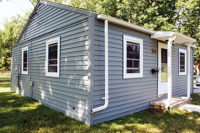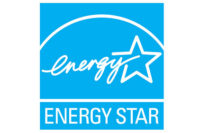
|
| Brian Ng, communications director for Energy Star Homes. |
Last year, the Environmental Protection Agency (EPA) completed the rollout of version 3 of its Energy Star for New Homes program, and more HVAC contractors became involved in this process to certify efficient homes.
A newly built Energy Star-certified home provides a homeowner with a residence that is more efficient than a house built to code. Now that the third version of Energy Star for New Homes has been fully implemented for more than a year, the agency is pleased with the continued success of the program, according to Brian Ng, communications director, Energy Star Homes.
“The Energy Star Certified Homes program averaged about 180 new partners a month in 2012, and most of the top production builders in the country are committed to building Energy Star-certified homes,” he said. “Energy Star continues to see great success of the V3 requirements through the number of Energy Star-certified homes that are built and the number of partners committed to building, verifying, and sponsoring Energy Star-certified homes. As of the end of the third quarter of 2012, there have been more than 72,000 Energy Star-certified homes built nationwide in every state and the District of Columbia, and it’s estimated that a total of 96,000 homes will earn the Energy Star label in 2012.”
HVAC contractors are required to have specific credentials to work on Energy Star homes (see sidebar below), and approximately 900 HVAC contractors nationwide are now credentialed.
Version 3 Updates
Since Energy Star version 3 was launched, the EPA has continued to accept feedback on the program from contractors performing the work. Currently, version 3 is in its sixth revision. According to Ng, “The primary goals of the revision process are to be responsive to partner questions, to disseminate policy changes in a consistent manner, and to adapt the program as needed for continued success.”
He characterized most of the changes in the latest revision as minor simplifications and clarifications, noting that there were two significant HVAC-related changes. One of these changes eliminated the need for HVAC contractors to collect the serial number of the furnace, condenser, and evaporator/fan coil. The second notable change permitted raters to measure the airflow of each supply and return register as part of the test and balance commissioning, in lieu of the contractor.
Another HVAC-specific issue that is still under review is the version 3 requirement that kitchen ventilation exhausts directly outdoors.
“Partner feedback indicated that the requirement to include kitchen ventilation required more time and, in some cases, better product availability of kitchen fans rated for sound and airflow,” Ng said. “Therefore, we are re-evaluating this requirement while we learn more from our partners and product suppliers to ensure that what we require is achievable. Final guidance is expected to be incorporated in revision 07.”
EPA anticipates that the seventh revision of version 3 will be released this spring. Ng added that all of the extensions that were granted for a few specific requirements in version 3 have expired for homes with a final inspection or permit date after Jan. 1, 2013.
“Partners will continue to ask questions that will require further clarifications and refinements, but we do not anticipate further extensions or major changes,” he said.
Energy Star Success
“The national market penetration among the market for single-family, site-built homes has remained fairly constant over the past few years. Energy Star’s market penetration was 25 percent in 2010 and 26 percent in 2011,” Ng said. He also noted that there is continued interest in Energy Star across different residential sectors, including multifamily high-rise housing, factory-built housing, and low-income housing.
 According to Ng, in addition to tracking the numbers, Energy Star also takes into account anecdotal feedback received from partners regarding the impacts of the program on their business, such as “being able to offer a better built home to customers and reducing costs related to customer callbacks and complaints.”
According to Ng, in addition to tracking the numbers, Energy Star also takes into account anecdotal feedback received from partners regarding the impacts of the program on their business, such as “being able to offer a better built home to customers and reducing costs related to customer callbacks and complaints.”
EPA originally began certifying homes in 1995. To date, a total of more than 1.3 million Energy Star certified-homes have been built nationwide. The program has continued to evolve, resulting in the current version 3. However, there are no current plans for a version 4, according to Ng. Instead, he said, Energy Star will continue to help partners implement the important new requirements for version 3. In addition, Energy Star will also keep tabs on individual states, since some may adopt more stringent codes.
“For those states, Energy Star will need to update the program requirements to ensure that an Energy Star-certified home is still more efficient than a home built to code,” Ng said.
SIDEBAR: Energy Star Credentials
Credentials to work on Energy Star homes are offered by independent, third-party oversight organizations whose programs have been recognized by EPA. HVAC contractors who want to earn these credentials and participate in the Energy Star for New Homes program must receive training from one of these organizations.
There are currently five organizations that have been recognized by EPA for credentialing HVAC contractors:
• Air Conditioning Contractors of America, www.acca.org;
• Advanced Energy, www.advancedenergy.org;
• New York State Energy Research & Development Authority, www.nyserda.ny.gov;
• Northern Colorado Energy Select Contractors, www.energyselectcontractors.com; and
• Northwest Energy Efficiency Alliance, www.northwestenergystar.com.
Publication date: 2/11/2013










